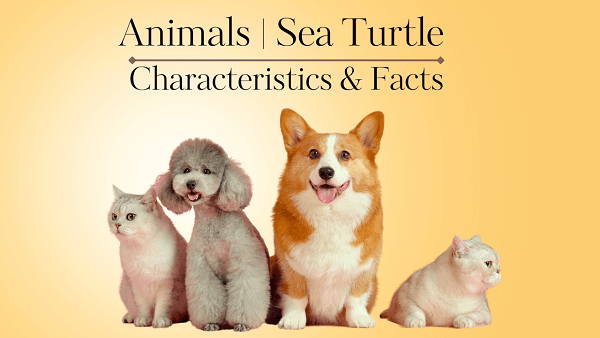Sea turtle Definition | Characteristics & Facts
Home » Animals » Sea turtle Definition | Characteristics & Facts
Sea Turtle Definition
Sea turtles are large marine reptiles that belong to the taxonomic family Cheloniidae or Dermochelyidae. They are characterized by their streamlined bodies, flipper-like limbs, and the ability to live in both saltwater and freshwater environments.
General Characteristics & Facts
They are known for their streamlined bodies, flippers, and protective shells. Sea turtles have a lifespan of several decades, with some individuals living up to 80 years or more.
These turtles are found in oceans around the world, primarily in warm and tropical waters. They migrate long distances between feeding and nesting grounds, often crossing entire ocean basins.
Turtles are important marine creatures that play a significant role in maintaining the health of marine ecosystems. They help control jellyfish populations and contribute to the health of seagrass beds and coral reefs.
The diet of sea turtles varies depending on the species, but it generally consists of seagrasses, algae, jellyfish, and other marine invertebrates.
After a period of incubation, the baby sea turtles hatch and make their way to the sea, facing various challenges and predation during this vulnerable stage of their lives.
Sea turtles face numerous threats, including habitat loss, pollution, entanglement in fishing gear, poaching, and climate change. Conservation efforts are critical to protect these endangered and threatened species and ensure their survival for future generations.
Read our Animals Encyclopedia with Complete Facts
Physical Characteristics Sea Turtle
Shell: Sea turtles have a protective shell called a carapace. It is made up of bony plates fused to the ribs and vertebrae providing defense and support for their bodies.
Flippers: Sea turtles have powerful flippers instead of limbs. These flippers are modified forelimbs adapted for swimming and steering through the water.
Head and Beak-like Mouth: Sea turtles have a large, elongated head with a beak-like mouth. The shape of the beak varies depending on the species and their diet.
Scales: The skin of sea turtles is covered in tough, scaly skin known as scutes. The scutes protect the turtles’ bodies and may have distinct patterns or markings, which can be used to identify different species.
Shell Coloration: The color of a sea turtle’s shell can vary among species. Some have dark-colored shells, while others have lighter or patterned shells.
Respiratory Adaptations: Sea turtles are air-breathing reptiles. They have adaptations that allow them to stay submerged for extended periods.
Size and Weight: Sea turtles come in various sizes depending on the species. The largest species, the leatherback sea turtle, can grow up to 7 feet (2.13 meters) in length and weigh over 2,000 pounds (900 kilograms).
Continue To Explore All Animals That Start With S
Scientific Classification of Sea Turtle
Kingdom: Animalia (Animals)
Phylum: Chordata (Chordates)
Class: Reptilia (Reptiles)
Order: Testudines (Turtles and Tortoises)
Suborder: Cryptodira (Hidden-necked turtles)
Family: Cheloniidae (Sea Turtles)
Key Locations
- Australia
- Brazil
- Costa Rica
- Ecuador
- Greece
- India
- Indonesia
- Japan
- Malaysia
- Mexico
- Mozambique
- Nicaragua
- Oman
- Panama
- Philippines
- South Africa
- Sri Lanka
- Thailand
- United States (Florida, Hawaii, and other coastal regions)
- Venezuela
View All A-Z Animals List
Sea Turtle FAQs
What does a sea turtle eat?
- Seagrass and Algae
- Jellyfish and Soft-bodied Invertebrates
- Crustaceans and Fish
Explore More:
- Tarantula
- Mackerel
- Mackerel
- Sea Stars
- Bird
- Amphibians
- Vertebrates
- Sand Dollars
- Barnacles
- Scallop
- Brittle stars
- Tilapia
- Carp
- Krill
- Catfish
- Grouper
- Calm
- Yak
- Yucatan Brown Brocket
- White-tailed Deer
- Uakari
- Utahraptor (Dinosaur)
- Qinghai Lake Naked Carp
- Qilian Shrew
- Qinling Panda
- Qacha’s Nek long-fingered Frog
- Red Fox
- Red Panda
- Rockhopper Penguin
- Salamander
- Snail
- Storks
- Jacana
- Junglefowl
- Jabiru Stork
- Junco
- Japanese Crane
- Kudu
- Kingfisher
- Giant Stuffed Tiger
- Giant Stuffed Dolphin
- Giant Stuffed Bear
- Giant Stuffed Penguin
- Scrat (Ice Age)
- Freshwater Clams
- Water snakes
- Sphynx at
- Honeybees
- Parrots
- Caribou (also known as reindeer)
- Nemo (from Finding Nemo)
- Simba (from The Lion King)
- Pink Panther
- Garfield


